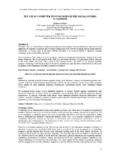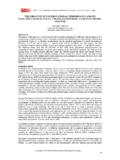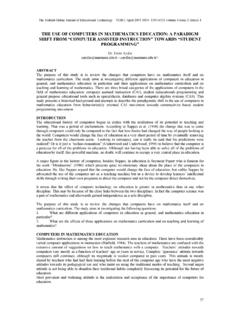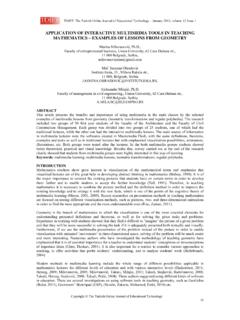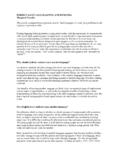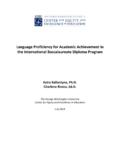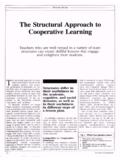Transcription of USING SONGS AS AUDIO MATERIALS IN …
1 TOJET: The Turkish Online Journal of Educational Technology October 2011, volume 10 Issue 4 Copyright The Turkish Online Journal of Educational Technology 378 USING SONGS AS AUDIO MATERIALS IN TEACHING TURKISH AS A FOREIGN LANGUAGE Funda Keskin Istanbul University Foreign Language Department Turkey ABSTRACT The use of SONGS as AUDIO MATERIALS in teaching Turkish as foreign language is an important part of language culture and has an important place in culture. Thus, the transfer of cultural aspects accelerates language learning process. In the light of this view, it becomes necessary to transfer cultural aspects into classroom environment in teaching Turkish as a foreign language.
2 SONGS are one of the instruments which provide students with the information related to target culture. In foreign language teaching, activities which are created by USING SONGS contribute to the development of a lot of language skills from grammar to pronunciation. Therefore, these activities can be carried out in all classes ranging from very basic levels to advanced ones. Additionally, as widely known, music and melody have a positive impact in terms of reducing stress and anxiety. Considering the current literature, the use of activities involving SONGS in foreign language teaching has positive effects on students within their language learning process and further help them to be encouraged toward foreign language and culture.
3 In this study, the place and the importance of SONGS as one of the tools to transfer culture and used in Turkish as a foreign language courses will be questioned, and sample activities will also be presented. Keywords: Teaching Turkish as a foreign language, AUDIO MATERIALS , , SONGS , culture transfer 1. INTRODUCTION With the progress of technology, the development of educational tools for foreign language teaching has started to contribute significantly to student progress while learning a foreign language. Therefore, the efforts to adapt these tools, which are developed by the technology of our day, to class environment has become of greater importance.
4 At the same time, the increase in the number of approaches to develop students skill of communication and cross-cultural interaction is an indicator of the fact that SONGS are audial and written tools essential for foreign language teaching. Utilization of visual and audial tools is effective in concretizing the learning process. USING these tools in class environment not only enables students acquire the desired information more quickly, but also makes the information acquired more permanent. According to ( ak r, 2006), it is a well-known fact that AUDIO -visual MATERIALS are a great help in stimulating and facilitating the learning of a foreign language That is to say, all AUDIO -visual MATERIALS have positive contributions to language learning as long as they are used at the right time, in the right place.
5 As multimedia consisting of tools appealing to human senses such as visual and audial tools used in foreign language teaching increase the amount of emotional input, the level and the quality of lingual skills of a person also increases Tarcan (2004),. Accordingly, the quality and the quantity of the output such as writing and speaking skills, which are of utmost importance for language learning, becomes higher. From this point of view, SONGS , which are audial tools, are important resources for students while developing lingual skills. 2. THE INFLUENCE OF SONGS IN FOREIGN LANGUAGE CLASSES USING SONGS as tools for teaching a foreign language has many benefits.
6 According to Lo and Li (1998), SONGS are able to change the monotonous mood in the class and with the smoothing effect of music; they provide a comfortable class environment so that students can develop their lingual skills more easily. Besides, utilizing SONGS in class environment amuses students, helps them feel relaxed and get rid of their negative attitudes towards a foreign language while learning a lingual structure through a song (Sar oban, 2000). In this direction, the amusing and relaxing mood brought by SONGS to the class eases the effects of certain emotional cases such as excitement, anxiety, lack of self-confidence and the feeling of being threatened, in addition to influencing learning process positively or facilitating it by stimulating the student emotionally (Kramsch,1993).
7 Also SONGS help motivating the learners as they provide a pleasant atmosphere. The students are encouraged to actively involve in the learning process by making use of their musical knowledge. In this way SONGS help students to develop confidence for language learning.( ahin, 2008) In a survey conducted by Joly (1995), the question whether the in-class utilization of SONGS which were chosen in accordance with the goals of the lesson was helpful or not was directed to students attending a Japanese speaking course. The results of the survey show that the majority of the students favored USING SONGS in the class.
8 TOJET: The Turkish Online Journal of Educational Technology October 2011, volume 10 Issue 4 Copyright The Turkish Online Journal of Educational Technology 379In the light of this view of students, it can be said that SONGS amuse students; they reduce the level of boredom existing in ordinary language teaching and increase student enthusiasm towards studying. According to Cheung (2001), as students more easily learn the things about which they have background knowledge, student motivation is increased when the elements belonging to the popular culture of the target language are involved in the class.
9 Bringing a song listened by the student to the class environment increases students desire to learn and enables them contribute to the process of learning by making use of their own musical knowledge. SONGS offer many codes that strengthen student memory such as choruses, rhymes and melodies (Maley,1987). Therefore, these codes in SONGS increase the functionality of SONGS in language teaching. When a student listens to and memorizes a song involved in the class, the lyrics are embedded in his/her long-term memory. Moreover, neurological researches have shown that musical and lingual processes occur in the same section of brain and that there are significant similarities between musical and lingual syntax (Maess & Koelsch: 2001).
10 Additionally, being authentic texts themselves, SONGS provide students with the opportunity of meeting authentic texts belonging to the target language. According to Schoepp (2001), as they feature examples of daily language, SONGS help students get prepared for the language they will encounter in daily life. Besides, as a part of daily life, they are the tools of informing the students about the culture of the target language. A song is a literary text and literary texts harbor cultural elements belonging to the language in which they are written. When the relationship between literary texts and life itself is examined, it is seen that the reality of life and human conditions in literary texts are narrated by being processed in the inner world of the author.
